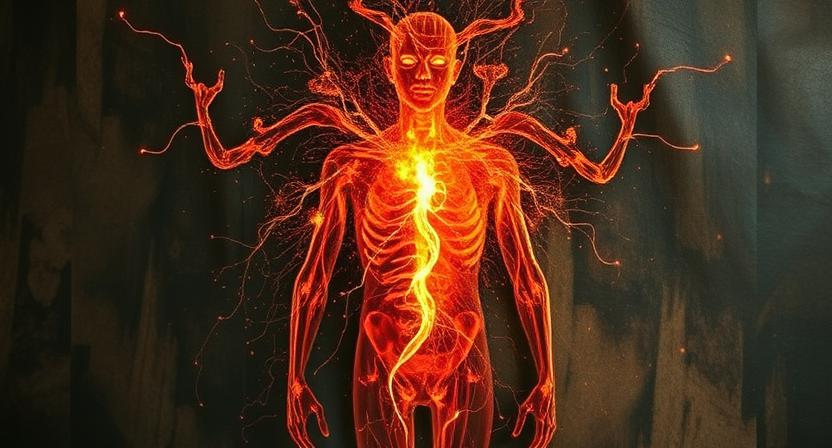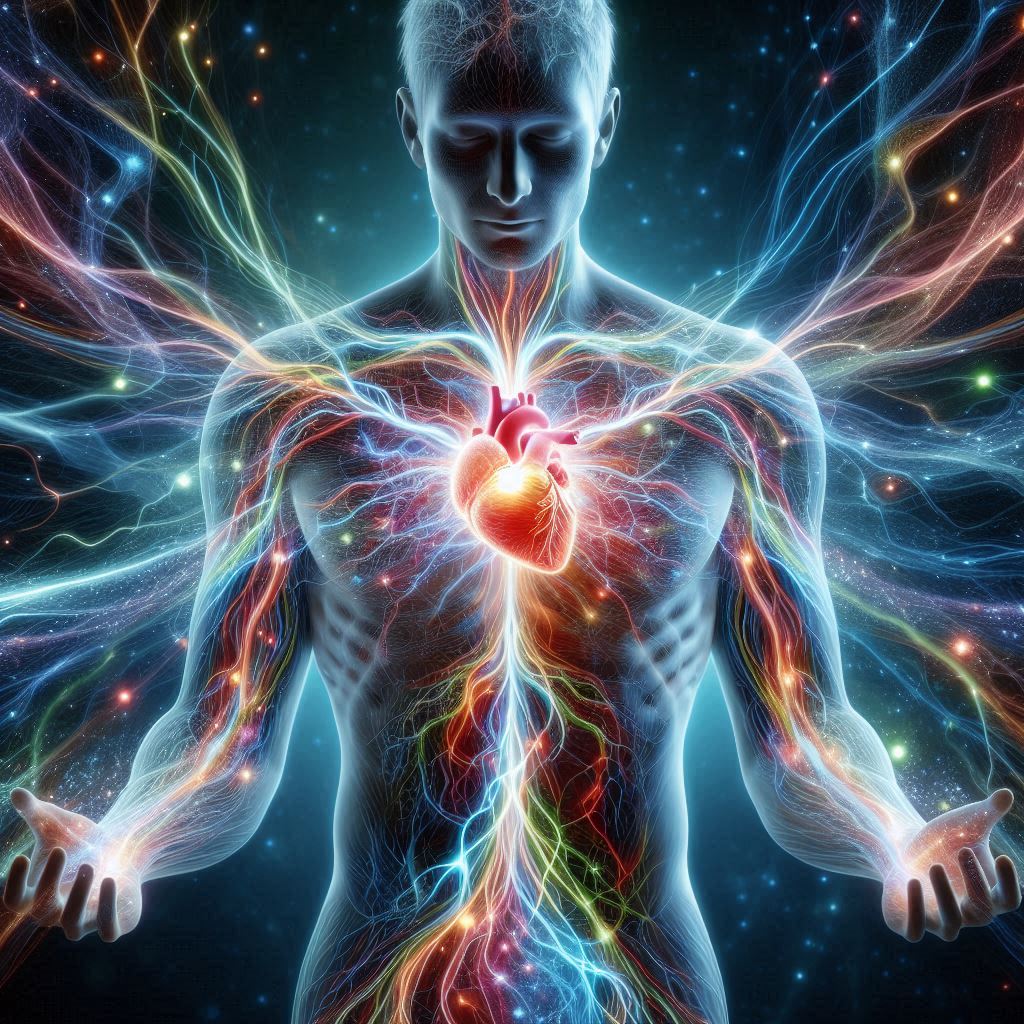Trauma is not just an emotional experience its effects are stored within the body, influencing both mental and physical health. Understanding how the body releases trauma is crucial for healing and well-being. When trauma is left unresolved, it can manifest as physical tension, chronic pain, anxiety, and a variety of other symptoms. The good news is that the body has its own natural mechanisms for releasing trauma, and various therapeutic practices can help facilitate this process. In this article, we explore the intricate mind-body connection, the physical signs of stored trauma, and effective techniques for releasing it.
1. Understanding How Trauma Gets Stored in the Body
The Mind-Body Connection in Trauma
Trauma affects both the mind and the body. Psychological events especially those that are overwhelming or life-threatening create lasting imprints in the brain. When these events occur, the brain signals the body to respond with a stress reaction. However, if the trauma isn’t fully processed, it doesn’t just fade away. Instead, it gets “stored” in various parts of the body, often leading to chronic tension, physical discomfort, or illness. This is why many people experience physical pain without an obvious cause it’s the body’s way of holding onto past emotional wounds.
How Trauma Affects the Nervous System
The autonomic nervous system (ANS) plays a central role in how trauma affects the body. When an individual faces a traumatic event, the ANS triggers either the fight, flight, or freeze response. If the trauma is not fully processed, the nervous system remains in a heightened state of arousal. This prolonged state of stress can result in physical symptoms, such as muscle tension, heart rate irregularities, and digestive issues.
The Role of the Amygdala and Fight-Flight-Freeze Response
The amygdala, a small structure in the brain, is responsible for processing fear and triggering the fight-flight-freeze response during times of perceived danger. In individuals with unresolved trauma, the amygdala can become hyperactive, constantly sending signals to the body that it is in danger. This heightened alertness can lead to anxiety, muscle tension, and difficulty calming down, even in non-threatening situations.
Physical Symptoms of Stored Trauma
Trauma doesn’t just linger in the mind it shows up in the body too. Over time, unresolved trauma can lead to physical symptoms that seem disconnected from the initial emotional wounds. These physical manifestations may be subtle or severe but can significantly affect overall well-being.
Chronic Pain and Tension
One of the most common physical symptoms of stored trauma is chronic pain. This could present itself as tension in the neck, back, shoulders, or jaw. The muscles remain contracted as a result of the body’s stress response, leading to discomfort or pain. In some cases, this pain becomes so ingrained that it can be mistaken for a medical condition, even though it is tied to unresolved emotional trauma.
Digestive Issues and Autoimmune Responses
Trauma stored in the body can also disrupt digestive health. Stress can lead to an overactive sympathetic nervous system, which impairs digestion. Conditions like irritable bowel syndrome (IBS), acid reflux, and other gastrointestinal issues are common among individuals with stored trauma. Additionally, unresolved trauma can trigger autoimmune responses, where the immune system attacks healthy cells, leading to conditions like rheumatoid arthritis or lupus.
2. How the Body Naturally Releases Trauma

The body has its own mechanisms for releasing trauma, which can be enhanced through various practices and therapies. By activating the body’s natural healing responses, individuals can help release stored emotions and restore balance.
Somatic Experiencing and Movement
Somatic experiencing focuses on the physical sensations that arise from trauma and uses movement to release trapped emotions. Techniques like shaking, stretching, and dancing can help release tension and restore a sense of safety in the body. One of the most natural ways the body releases trauma is through spontaneous movements, similar to how animals shake off stress after a traumatic event.
Shaking and Tremoring (Like Animals Do)
After animals experience trauma, they often shake their bodies to release built-up tension. Humans can benefit from this primal movement as well. Shaking or tremoring allows the body to release stored tension and can be a powerful tool in trauma recovery. This natural response helps the nervous system return to a state of balance.
Yoga and Trauma-Informed Stretching
Yoga, particularly trauma-informed yoga, helps release physical tension while fostering a sense of safety and awareness. Mindful stretching and body postures help reconnect individuals to their bodies and allow for the gradual release of stored trauma. These practices promote nervous system regulation, helping to bring the body back into a relaxed and balanced state.
The Role of Breathwork in Trauma Release
Breathwork is another powerful tool in trauma healing. Controlled breathing techniques can activate the parasympathetic nervous system, which helps calm the body and mind. Breathwork can also facilitate emotional release, helping individuals process and let go of pent-up emotions.
Diaphragmatic Breathing for Nervous System Regulation
Diaphragmatic breathing, or deep belly breathing, involves slow and intentional inhalations and exhalations that engage the diaphragm. This practice helps activate the parasympathetic nervous system, which is responsible for calming the body after a stress response. Regular diaphragmatic breathing can improve overall nervous system regulation and reduce the physical effects of trauma.
Polyvagal Theory and Safe Social Engagement
Polyvagal theory suggests that trauma can dysregulate the vagus nerve, which is responsible for calming the body. Safe social interactions, such as supportive relationships or being in a calm environment, can activate the vagus nerve and promote healing. By fostering safety through connection, individuals can naturally release trauma stored in their bodies.
3. Therapeutic Techniques for Trauma Release
In addition to natural body-based techniques, there are several therapeutic approaches that can help release stored trauma. These therapies are designed to help individuals process unresolved emotional pain and restore equilibrium.
EMDR (Eye Movement Desensitization and Reprocessing)
EMDR, by using gentle bilateral stimulation (like guided eye movements), this therapy helps the brain ‘rewire’ and release stuck traumatic memories. This technique helps individuals process emotional experiences and integrate them into their broader life narrative, reducing their emotional intensity.
How Bilateral Stimulation Helps Reprocess Trauma
Bilateral stimulation, such as moving the eyes back and forth, stimulates both hemispheres of the brain, facilitating the processing of trauma. This stimulation helps desensitize traumatic memories, allowing individuals to experience them with less emotional distress.
Biofeedback and Neurofeedback Therapy
Biofeedback and neurofeedback are therapies that teach individuals to regulate physiological functions, such as heart rate and brainwave activity. These therapies help people develop the ability to manage stress responses and promote relaxation, supporting the healing of trauma stored in the body.
Training the Brain to Regulate Stress Responses
By using biofeedback, individuals can learn to identify and manage stress responses in real-time. This self-regulation technique allows people to regain control over their body’s reactions to stress, which is crucial for trauma recovery.
Body-Based Therapies (Massage, Acupuncture, etc.)
Massage therapy, acupuncture, and other body-based treatments can release physical tension and promote emotional healing. These therapies focus on stimulating specific points in the body, encouraging the release of trapped emotions and restoring balance.
How Touch Releases Stored Emotional Pain
Physical touch, through massage or acupuncture, can trigger the release of emotional pain stored in the body. These therapies stimulate the release of endorphins and other neurochemicals that support relaxation and emotional processing.
4. Daily Practices to Support Trauma Release
Incorporating daily practices that promote healing can enhance the process of releasing trauma. These practices help maintain nervous system regulation and promote emotional well-being.
Grounding Techniques for Immediate Relief
Grounding techniques can help individuals stay present and release the overwhelming effects of trauma. These practices bring awareness to the body and the present moment, reducing feelings of dissociation and anxiety.
The 5-4-3-2-1 Method for Anxiety
This grounding technique involves focusing on the five senses: identifying five things you can see, four you can touch, three you can hear, two you can smell, and one you can taste. This practice helps shift the focus away from stress and trauma, bringing the individual back to the present moment.
Earthing and Nature Connection
Spending time in nature, also known as earthing, can promote emotional healing. Walking barefoot on natural surfaces like grass or soil has been shown to help regulate the body’s stress responses and facilitate emotional release.
Journaling and Expressive Writing
Writing can be a powerful tool for releasing trauma. Journaling helps individuals process and articulate their emotions, making sense of their experiences. Writing about traumatic events allows individuals to release pent-up emotions and gain perspective on their healing journey.
How Writing Helps Process Unresolved Emotions
Expressive writing enables people to confront their feelings, process unresolved emotions, and make sense of their experiences. This practice can be especially beneficial for those who struggle to express emotions verbally.
Building a Safe Environment for Healing
A supportive environment is key to trauma recovery. Feeling safe and secure in one’s surroundings promotes healing and emotional release. Surrounding oneself with trusted individuals and building a sense of community is an important part of the process.
The Importance of Community and Secure Attachments
Trauma recovery is often best achieved through connection with others. Having a secure, supportive network of friends, family, or a therapist can help individuals feel safe and nurtured, fostering a healing environment.
Conclusion: The Path to Sustainable Trauma Healing
Why Trauma Release is a Gradual Process
Releasing trauma is not a quick fix it’s a gradual process that requires patience and self-compassion. As the body gradually releases stored trauma, it’s important to honor the journey and allow space for healing to unfold.
When to Seek Professional Help
If you find that your trauma is overwhelming or persistent, seeking professional help from a therapist specializing in trauma can be essential. Professional support can guide you through the process and provide personalized strategies for healing.
Releasing trauma is an ongoing process, but with the right tools and support, you can heal and restore balance to your body and mind. By understanding how the body stores and releases trauma, individuals can begin to reclaim their health, well-being, and emotional freedom.

